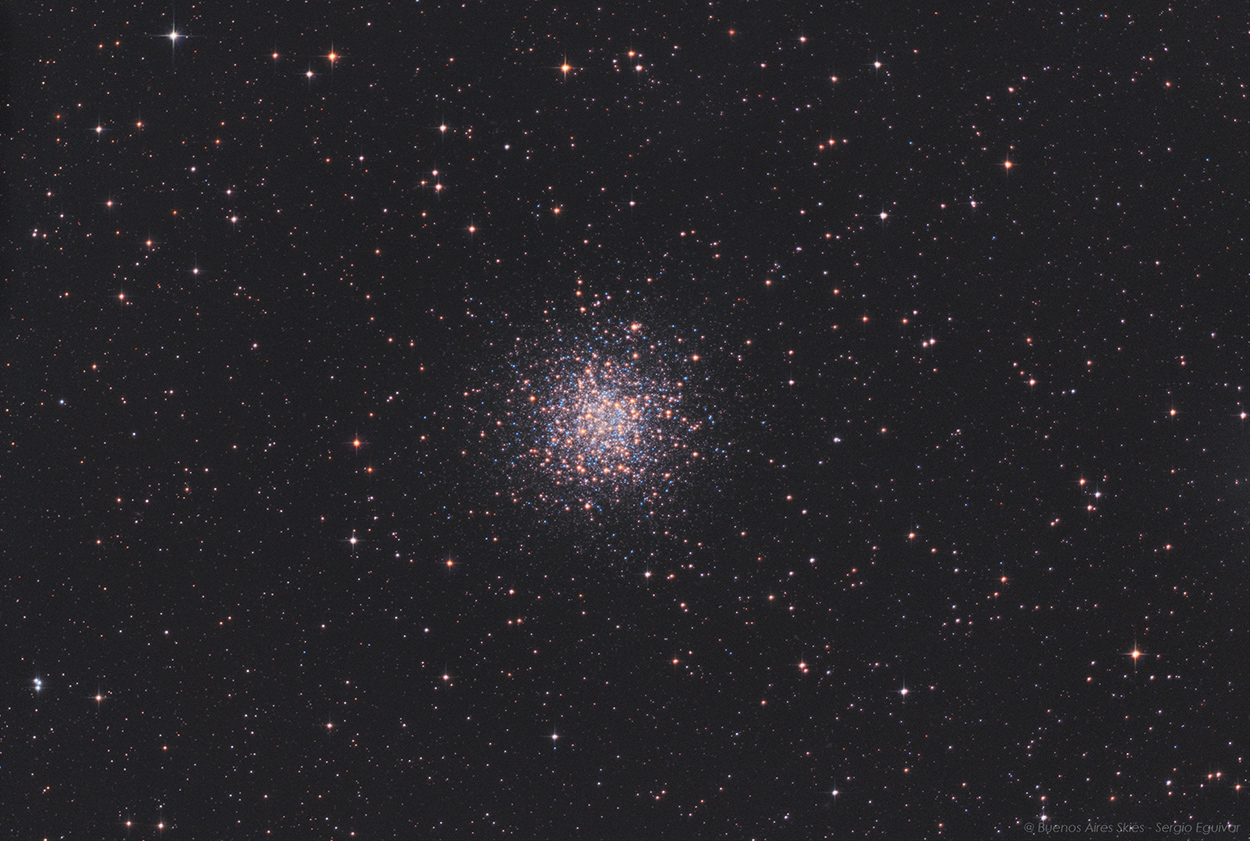
| HOME |
MESSIER 55
GLOBULAR CLUSTER IN SAGITTARIUS
(Image centered at: ra 19 h:40 m / dec - 30º 58')
CLICK THE IMAGE FOR A HIGH RESOLUTION VIEW
October - 2023, Home Backyard in Martinez, Buenos Aires, Argentina
DATA
TYPE: Globular Cluster
APPARENT DIAMETER:19 arc minutes
APPARENT MAGNITUDE (V): 7.0
DISTANCE: 20,000 light years
IMAGE INFORMATION
INSTRUMENT: 6" ORION OPTICS UK (Ultra Grade Optics) w/Sky Watcher Coma Corrector (0.9x) working at at f4.5
CAMERA: QHY 183 MONO
MOUNT: SKY WATCHER NEQ6, OAG with Starlight Xpress Lodestar
FILTERS: Optolong LRGB Set
SKY CONDITIONS: urban skies - Bortle 8
EXPOSURES: LRGB (60,60,60,60)
OBJECT DESCRIPTION AND IMAGE SESSION
Messier 55 (aka M55, NGC 6809) is a quite large globular cluster with an apparent diameter of 19 arcs minutes, roughly 2/3 of the Moon's apparent diameter. While most globulars look like round nebulae, Messier 55 appeared very grainy with a loose appearance due to its very dim stars members, however it has a total luminosity equivalent to 100.000 times our Sun. It is one of the 160 globular clusters encircling our Milky Way, mostly toward its bulging centre. Messier 55 has a low metallicity structure, meaning that nearly all of the gas in the original cloud was hydrogen, along with some helium and even much smaller amounts of heavier chemical elements such as oxygen and nitrogen.
Observations of globular cluster's stars reveal that they originated over 10 billion years ago just a few billion years after the Big Bang. Its diameter spans over an area of about 100 light years. The globular contains an estimated of 100,000 stars with 55 variable stars
M55 was originally discovered by French astronomer Nicholas Louis de Lacaille on June 16, 1752, when he was observing in South Africa, and cataloged by him as Lac I.14. Charles Messier finally found it and cataloged it on July 24, 1778, after having looked in vain as early as 1764: This is a consequence of this object's southern declination.